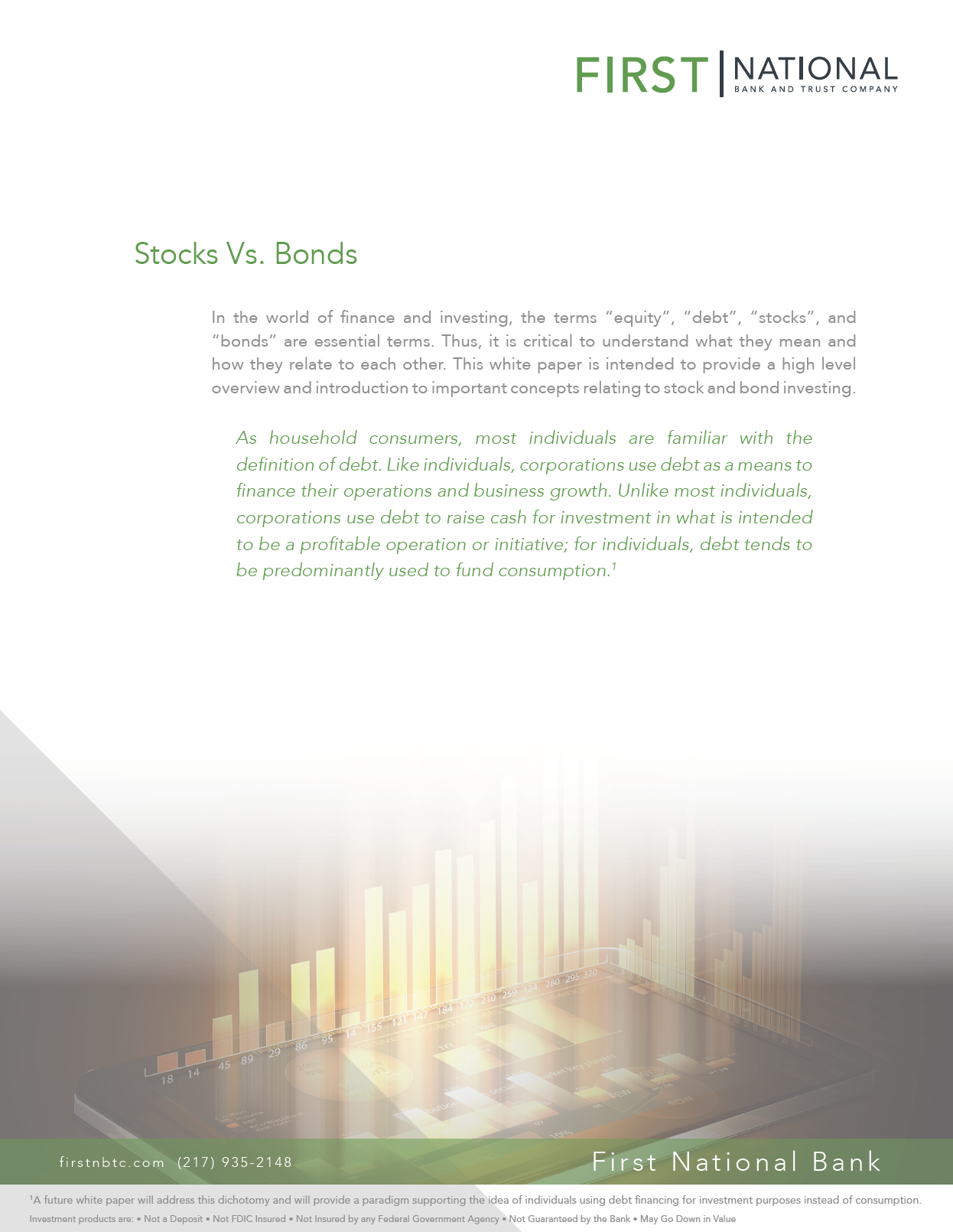In the world of finance and investing, the terms “equity”, “debt”, “stocks”, and “bonds” are essential terms. Thus, it is critical to understand what they mean and how they relate to each other. This white paper is intended to provide a high level overview and introduction to important concepts relating to stock and bond investing.
To download our free white paper, fill out the form below!

Different Types of Stocks
Stock market opportunities are often segmented different ways. The three most prominent forms of categorization are:
- Market capitalization size
- Value or growth
-
Industry classification
Different Types of Bonds
When discussing stocks, the discussion always pertained to shares of corporations. There are three different general categorizations of bonds:
- Issuer type
- Maturity length
- Credit strength
Determinants of Investment Return
Bonds have narrower and more predictable fluctuations in returns compared to stocks. It can be said that bonds provide relatively closed systems of outcomes while stocks entail more open systems of outcomes.
Overall, stocks have theoretically unlimited upside price appreciation potential and can also lose 100% of their value. As many have observed, stocks have a high enough variability of returns it is virtually impossible to predict future returns with any degree of precision or accuracy.

